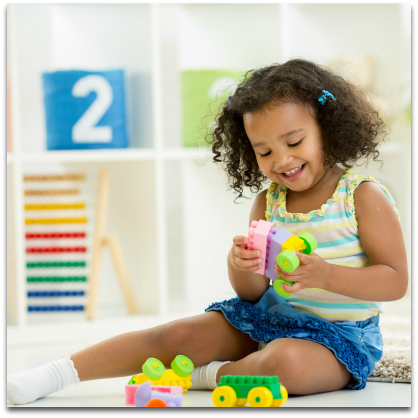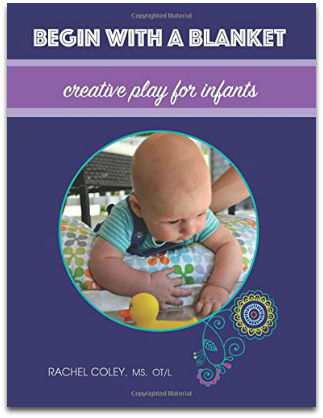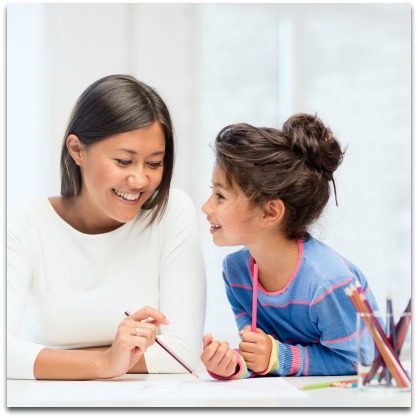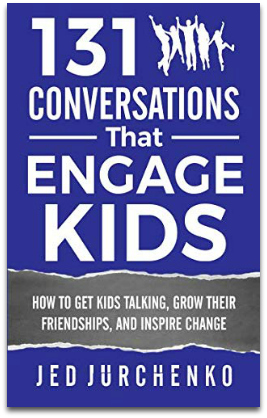 At a recent youth retreat my 12-year-old nephew, Joey, was called up on stage along with four other preteens. Each participant had a box of tissues set in front of them. They were told, “at the word GO your challenge is to be the first person to remove all the tissues from the box. The winner will receive a large box of candy.”
At a recent youth retreat my 12-year-old nephew, Joey, was called up on stage along with four other preteens. Each participant had a box of tissues set in front of them. They were told, “at the word GO your challenge is to be the first person to remove all the tissues from the box. The winner will receive a large box of candy.”
At Go, four of the middle schoolers began to frantically remove the tissues from the box, one at a time. Joey, looking puzzled, watched his frenzied competitors for a moment, picked up his box, ripped off the top and pulled all the tissues out at once. Done!
When I asked him later how he came up with that idea he said, “It was the fastest way to get them out of the box.”
Critical thinking – being able to look at a problem, analyze it, and come up with a creative and effective solution – is one of the most important skills our children can learn. Critical and creative thinking skills help us make good decisions and solve problems. Those children with good critical thinking skills will be more successful as adults.
Joey saw the problem, thought outside the box, and emptied his box to receive his reward. So how do we raise kids who think like this? How do we raise kids who can look at a situation and come up with creative and alternative ways to address it?
Here are 3 easy ways you can encourage critical and creative problem solving in your own kids.
#1. Teach Kids to Entertain Themselves
 When our children are infants, we love to hold, cuddle and snuggle them. We entertain them because they cannot yet entertain themselves and interacting with them is how we begin to teach them about the world.
When our children are infants, we love to hold, cuddle and snuggle them. We entertain them because they cannot yet entertain themselves and interacting with them is how we begin to teach them about the world.
As they grow, instead on continuing to have them rely on us for entertainment, we begin to teach them how to entertain themselves. Part of that is having them spend time without us right there with them.
But won’t they get bored? Yes! And because they feel bored they will be motivated to find something to do.
In her Psychology Today article, Kids Need Time For Themselves, Peggy Drexler, Ph.D writes,
“Studies show that children who know how to fill their time alone rarely feel isolated or lonely. Instead, they learn to be content with whatever situation is at hand and truly have fun being creative in the moment.”
Spending quiet time alone (without electronics!) is not only helpful to mom and dad, but beneficial to the child.
It teaches calmness.
So much of our day is filled with noise, stimulation, and running around that we need to teach our kids how to be calm. Children need to learn, in the midst of all that is going on, how to step back and be still. This will help them later to solve problems and come up with ideas in the midst of chaos.
It helps them feel comfortable being alone.
In order to think outside the box a child needs to be an independent thinker. They need to have the confidence that, if alone in a situation, they can calmly deal with it.
Let’s us off the hook.
It reminds our kids, and us, that it’s not mom and dad’s job to entertain them 24/7. So often as parents we feel that if our children need something we need to drop whatever we are doing and run to their aid. While this is true if they are hurt or in trouble, it is not the case if they are bored. A kid who thinks outside the box needs to learn how to spend time entertaining themselves.
Makes them problem solvers.
When a child is able to entertain themselves, they learn to find solutions on their own. If mom and dad are not there to enliven their play, they will learn how to do it alone. This is a great step in being an independent thinker, a problem solver and thinking outside the box.
#2. Encourage Creative Play
We often think of creative kids as being musical or artsy, but creativity is also important for academics like math and science, as well as for their social and emotional intelligence. Creativity is what led the Wright brothers to leave the ground and Johannes Gutenberg to develop the printing press.
Creativity is also needed for kids to think outside the box. But kids today aren’t being creative. Kids today no longer transform a stick into a horse or a sword because they can pull up a video game where their character can ride a horse or wield a sword. Therefore, for many kids, creativity has become something that must taught.
You can start young.
 The book, Begin With A Blanket: Creative Play For Infants by Rachel Coley suggests ways we can start teaching creative play from day one. Each activity lines up with the stage of development our little one is on from focusing on our face to lifting their head. Is your child already older? Don’t worry! It’s not too late.
The book, Begin With A Blanket: Creative Play For Infants by Rachel Coley suggests ways we can start teaching creative play from day one. Each activity lines up with the stage of development our little one is on from focusing on our face to lifting their head. Is your child already older? Don’t worry! It’s not too late.
Provide resources that encourage creativity.
When I was little my mom would pull out the blender and put out all sorts of food items for me to make “Kid Soup.” When my own kids were young, I would send them out in the yard with a spade and a bucket to see what they could discover. Yes, my mom ended up with a messy kitchen and my yard had a plethora of holes, but the time spent and the memories made helped to develop creativity which led to out of the box thinking.
Creative spaces.
Maybe the last idea sends you over the edge. No worries. You can also designate a space for some types of creative play. The porch or garage for painting, a corner for dress up, a rug for Legos. This will help curb the creative mess that can develop while still allowing children the time they need to explore their creative sides.
Let kids color outside the lines.
Worried that your child isn’t coloring that tree green like it should be? Or are you concerned they can’t quite stay inside the lines? Don’t be! They are being creative! And if they make a mistake (or “happy little accidents” as Bob Ross calls them) they will figure out what needs to happen next.
Sandra Fisher, assistant professor of early-childhood education at Kutztown University, encourages blank paper as well as coloring books. She writes that with blank paper, “children express themselves more freely in their drawings, especially if they still have limited vocabularies.”
Don’t worry about the end result.
Yes, the Kid Soup is not really to be eaten. The picture your child drew of your family looks more like a herd of potatoes with eyes. The goal is the process, not the end result. The process is where the learning and creativity take place. Instead of asking, “What is that?” say “Tell me about it! Did you have fun? What was your favorite part?” This is a more affirming way to talk about what your child has done and focus on the process.
#3. Be the Example
 We have heard it said that, imitation is the sincerest form of flattery. What traits of yours do you see your sons and daughters imitating? Did you know that our children can also copy our problem solving skills? They can!
We have heard it said that, imitation is the sincerest form of flattery. What traits of yours do you see your sons and daughters imitating? Did you know that our children can also copy our problem solving skills? They can!
Now, you may be worried, “but I don’t think outside the box at all! I actually live in the box!” Do not fear. You can still model ways that can help your kids develop critical thinking and creative problem solving skills.
Share your mistakes.
This does not mean I told my first grader about the time I tried pot. However, it does mean admitting when I am wrong or mess up. It means taking the blame when I spill a glass of milk on the floor and not blaming the dog.
Why is it so important for us to show our kids that we fail, too? It’s because we want them to see that failure happens to everyone. Kids who think outside the box are going to try and fail. If we own up to our own mistakes and failures and then make corrections and try again we are showing our kids that it is possible to succeed even after you have failed once. And that is the kind of example that our kids need us to be.
Let them express thoughts contrary to our own.
Thinking outside the box involves thinking. I know that sounds obvious, but sometimes our kid’s thoughts may be different than our own – especially as the grow. They need to wrestle with these thoughts and come to a conclusion.
Instead of telling them they are wrong, encourage them to justify those thoughts. Their thinking may surprise you. Alison Roy, lead child and adolescent psychotherapist at East Sussex Child and Adolescent Mental Health Services (CAMHS), says:
“Children who have been responded to, led to believe – in a healthy way – that their voice is valued, that all they have to do is object and action will be taken – they will push boundaries. And this is really healthy behavior. Compliance? They’ve learned there’s no point arguing because their voice isn’t valued.”
Reduce screen time.
Screens prevent children from participating in unstructured play time. The CDC has found that, “unstructured playtime is more valuable for a young child’s developing brain than is electronic media.”
But it’s not only children that need to reduce the time they spend in front of a screen. Parents also need to cut their screen time. Eating every meal in front of the TV while entertaining, stifles conversation. Talking on our phone while driving with our kids is missing out on times to talk about what is going on with them.
When we aren’t on our phones we are available to our kids to talk through problems and issues. We can act as a sounding board for ideas and creative thinking. And if our kids see us put our screens down, they won’t be asking to plug into their favorite game app quite so often.
Yes, it takes a conscious effort, but it is worth it to develop conversation skills, creativity and out of the box thinking.
Ask open ended questions.
When you are driving, or eating or just hanging out, ask open ended questions. “How would you… What would you do… Why would someone…” Open ended questions are so great to encourage kids to talk rather than giving us a rote answer.
 Need some specific ideas? Check out 131 Conversations That Engage Kids: How to Get Kids Talking, Grow Their Friendships, and Inspire Change (Volume 2) by Jed Jurchenko. Here you will find some great conversation starters like, “If the zoo said you could take home one exotic animal as a pet, what would you choose?” And remember, the questions are not just for the kids….
Need some specific ideas? Check out 131 Conversations That Engage Kids: How to Get Kids Talking, Grow Their Friendships, and Inspire Change (Volume 2) by Jed Jurchenko. Here you will find some great conversation starters like, “If the zoo said you could take home one exotic animal as a pet, what would you choose?” And remember, the questions are not just for the kids….
Eat together as a family.
A 2015 article in the Washington Post listed eating dinner as a family as one of the most important things you can do with your kids. Not only does it teach kids about how to eat healthy foods, it also improves our family communication.
Because family mealtime is so closely tied with communication time, dinner is a great time to develop outside the box thinking. You can include the open-ended questions mentioned above or you can talk about specific problems or school projects they may have.
It may mean eating dinner at 5:00 on Monday and 7:00 on Tuesday, but having that time together can open up your child’s out-of-the-box thinking.
The 2-Minute Action Plan for Fine Parents
- What kind of thinker are you? Outside the box? One foot in, one foot out? Inside the box with the lid closed? Do your children show similar traits?
- What are three ways your child likes to express creativity?
- Think about the last time you showed your child you messed up. If you haven’t been able to do that yet how you can do this in the future.
The Ongoing Action Plan for Fine Parents
- Make a conscious effort to give your child time to play alone. Have a few non-electronic options for them, but allow them to play with something else if they want to, as long as they play by themselves.
- Consider how often your child colors outside the lines? On paper, on the driveway with chalk, on the deck with water and a paintbrush? How can you increase this?
- Work on saying, “Tell me about it! Did you have fun? What was your favorite part?” verses “What is that?”
- Monitor screen time for the entire household.
- Have dinner with your entire family on a regular basis. You can even put some conversation starter questions in a jar and draw a question. Or assign a question person for the night who gets to choose the question.
Thank you! What a great article. I love that you ask questions about the process of painting rather than asking what it is. It helps children to figure out what they love to do and why. Fabulous!
Thank you. My mom was always really good at encouraging the process with “tell me about it!”
Yes I love the question about the process of how they liked creating their art rather than asking what they created. I always ask what it is which I will now change! So many ideas I now have to encourage their creativity by improving their play space like having the lego rug – such easy and straight forward ideas. Plus the question jar at dinner time – thank you so much for this article!
AMAZING!!! Thank you for sharing! 🙂
So glad you enjoyed it!
Super excited and proud of you for writing this informative article!!! You are a true gift to us all!!
Thank you!
Thanks and thanks for always being there when the bad and the ugly hits!
This is beyond fabulous!
You are truly a gifted writer/communicator/speaker !
Such great research and such wonderful resources! Thank you for living it first ( The good the bad the ugly) and then sharing with us so freely!
I so enjoy your humor, depth and your “out of the box” thinking! Can’t wait to dive into some of these articles! With love, appreciation and Blessings mb
Wow, I needed to read this!! My only child 100% depends on me to be his sole entertainer. He has been that way since day one and I thought it was my responsibility to adhere to all of his entertainment needs, making sure that he is never bored. I come running to him every time he yells for me when he is perfectly capable of getting me on his own. 🤦 It’s just become such habit. Can you imagine what that’s like for me as a single mom with health issues and what expectations that has given him as a now 6 year old? I have a lot of reversing to do and he will push back, as he also just simply doesn’t like being alone. But wow, I knew something didn’t feel quite right, as other moms had time for things that I never have time for – like 5 minutes to myself lol! Poor kid, this is completely my fault and had I not read this article I would have continued raising him in a way that is severely limiting his ability to think critically and independently. From the bottom of my exhausted heart, THANK YOU 💓
First off – so proud of you. Single mom, health issues and willing to make adjustments to help develop a more well rounded, creative child. Good job! It is SO hard to not run every time they call and make sure they are always entertained and happy, but sadly, that is not life . By letting him spend time alone, teaching him how to entertain himself and allowing him to experience failure, you are setting him up for future success. Your investment of time and energy to teach this to your son while he is still in your home and under your care is difficult, but totally possible! Good job mom, now go and take 5 minutes for yourself!
What a great and creative article.
You are a truly gifted writer.
Always proud of you.
Your Hub
Thank you!
Awww… you two are so lucky to have such a lovely supportive relationship <3
He is truly a gift to me!
I wish I had read your article before my children were grown and gone. Now I have grandchildren and like your article recommends I support their exploration more and entertain less and enjoy them more.
Never to late to impact a child! Good job, I know your grandchildren will benefit from your time and support.